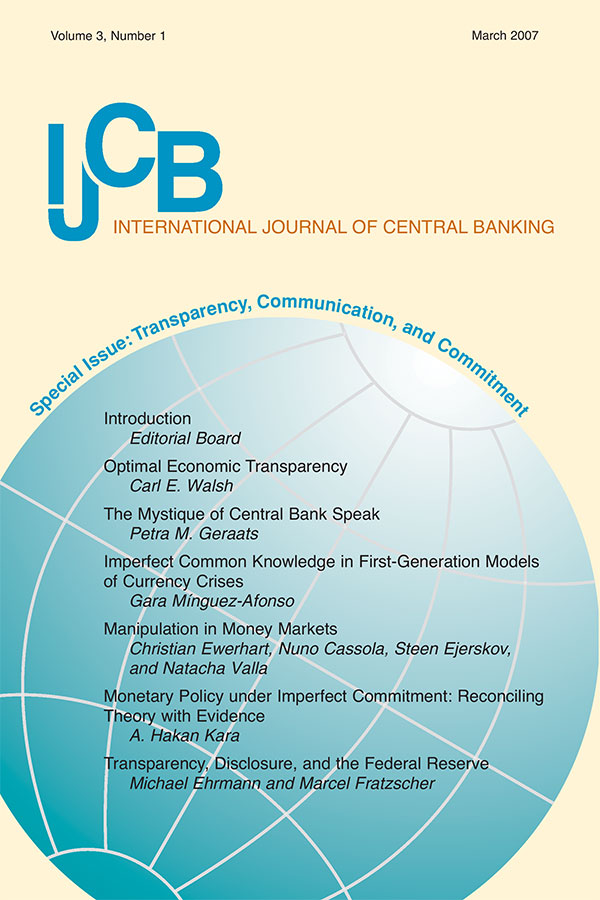In this issue of the IJCB
A. Hakan Kara
Michael Ehrmann and Marcel Fratzscher
John Taylor, Hyun Shin, Frank Smets, Kazuo Ueda and Michael Woodford
Carl E. Walsh
Petra M. Geraats
Gara Mínguez-Afonso
Christian Ewerhart, Nuno Cassola, Steen Ejerskov and Natacha Valla
Previous issues
View all issues
Forthcoming articles
Browse through papers that have been accepted for publication and will appear in future issues of the journal.
View all forthcoming articles